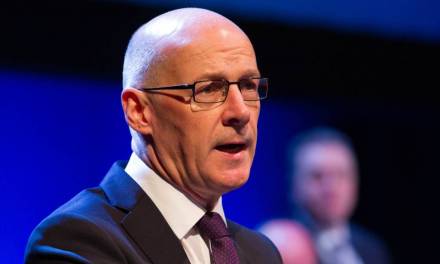Scotland’s Education Secretary and Wales’ Education Minister have lifted the lid on a potential phase reopening of schools, whereas ministers in England remained tight-lipped.
England’s Education Minister said last week that vulnerable children would be “priority” as part of any plans to reopen schools.
But are we any closer to reopening schools and what does the plan look like?
What the Education Minister said last week
When asked whether the UK should be prioritising early years provisions when schools reopen, the Education Minister Vicky Ford told the Education Select Committee:
We are thinking a huge amount about how we reopen. The reopening will only happen when we have the scientific advice that it is safe to do so.
I always will, as the Minister for Children, be prioritising vulnerable children in my press for how we manage this process. Different countries have looked at this in different ways and those discussions about who needs access most: those who are transitioning or not – that’s early years, going from pre-school into reception, or reception into Year 1, those who are transitioning into Year 6 upwards, that have got exams coming upwards, we will be looking at all the different developments in the rounds and absolutely we will be prioritising those who need the support most but the thinking that is happening about social distancing and isolation.
The Education Secretary of Scotland on the reopening of schools
John Swinney, Education Secretary for Scotland and also deputy first minister to Nicola Sturgeon, said that currently “the position (to return to school) doesn’t exist.”
Speaking on BBC Scotland’s The Nine news programme, Mr Swinney said:
I’m not leaning towards any option but I will give you a range of different options. You could bring back all pupils on a staggered basis over the whole school week so every single young person would have some connection to formal education on the resumption of this arrangement. That’s one option.
Another option would be to perhaps prioritise young people that are going through a transition in their education: from early years into primary education, from primary education into secondary education, young people preparing for national qualifications to sit in the spring of 2021 – there’s another option that could be considered. So there are a range of different permutations that could be undertaken.
He said options that were currently on the table included:
- All pupils could return to school but attendance wold be “on a stagged basis over the whole school week”.
- Young people going through a transition could be prioritised, such as those going from nursery into primary, or from primary into secondary.
- Students due to sit national qualifications next year could be prioritised.
- The summer holidays could start sooner and end earlier.
The Education Minister of Wales on the reopening of schools
Plans have also been discussed in Wales, with Education Minister Kirsty Williams stating that school provision would gradually adapt and extend further during the next phase of lockdown.
It is ital that parents, staf and students have confidence in returning to school. We will only enter the next hase when the evidence and advice suggests that it is the right thing to do. Schools will not immediately return to operatng at full capacity. It will be a phased approach and I do not expect schools will suddenly open for all pupils, from all years, all eek. The ongoing challenge of Covid-19 means we will prepare schools for a range of scenarios for the foreseeable future. However unlikely, we must prepare for a eventuality that requires schools to reduce operations at specific future points.
As I understand it, social distancing practices are probaly due to continue for a considerable period of time. And that causes some real practical challenges in terms of school transport, in terms of parents at the school gate, an the ability to accommodate the cohort within confines of aclassroom. But that work and that thinking is ongoing.
How badly can children spread coronavirus?
Meanwhile Gordon Raynor from The Telegraph asked about the effect of coronavirus on children and how this would influence plans for the reopening of schools at yesterday’s daily UK Government briefing.
Q: (To Professor Chris Whitty, Chief Medical Officer) You send in March that children only get mild symptoms of coronavirus so this is a silver lining, while Sir Patrick Vallance (Chief Science Officer) said closing schools would have a minimal effect on the spread of the virus so (at that time) it was safe to keep them open, and there was zero chance of children avoiding contact with each other anyway. To what extent has your advice on sending children to schools changed and have you worked out the effect on the ‘R value’ (rate of infection) of sending children back to school and also do you believe that children can spread coronavirus to other children following reports at the weekend that perhaps they couldn’t?
Chris Whitty responded:
It remains the case that the great majority of children either don’t get coronavirus or if they do, the symptoms are minor. That doesn’t mean, sadly, that it is absolutely true – there are still a small number of cases including some very severe cases, but they are relative to adults. So, the first reason for not sending them to school – that it is particularly dangerous – wouldn’t be true in the case of coronavirus.
There is no doubt that they contribute. If you have schools open, it does contribute to an increase in the ‘R (infection) rate’. So with schools closed, the ‘R rate’ goes down. The collection of things that were done in March to pull the ‘R rate’ down from near three to where it is now (below 1). If you stopped doing it, you would lose some of the benefit that we’ve currently got.
There is a debate around the world, “what contribution do children make around the spread of this virus?”. Is it different between young children and older children? But unfortunately, we do not have direct data yet that really help us. While I think it remains the case that we think that the contribution of children at school to spread this virus in less than flu it certainly contributes. Would reopening schools keep the R rate below 1 or would it tip us above 1? So it is good question, but unfortunately there is not a really clear answer but we are getting closer to having a narrower range of uncertainty around this.
How do you think the school reopening process should be managed? Let us know in the comments below.
How EDLounge can help to ensure education continues
EDLounge’s motto throughout this pandemic has been: If setbacks occur education can continue.
Our online learning support means that lessons, assessments, revision, coursework and other tasks can be set by teachers without putting other pupils at risk.
Over 11,000 lessons are available – which a large portfolio of lessons which match the UK curriculum.
Pupils are also safeguarded – with a range of facilities available including alert mechanisms, instant messaging with teachers and eyes-on learning. All EDLounge Limited staff are enhanced CRB-checked.
For more information, click here.









